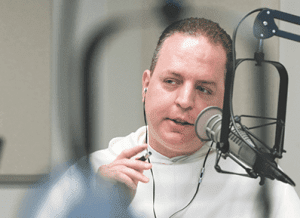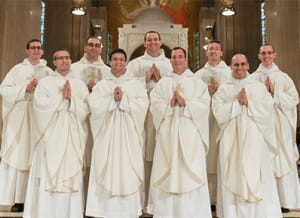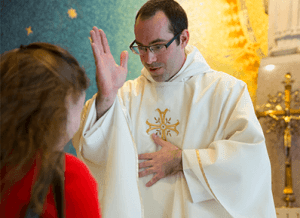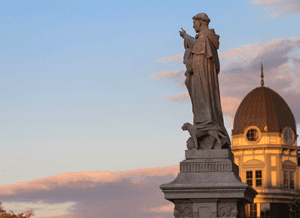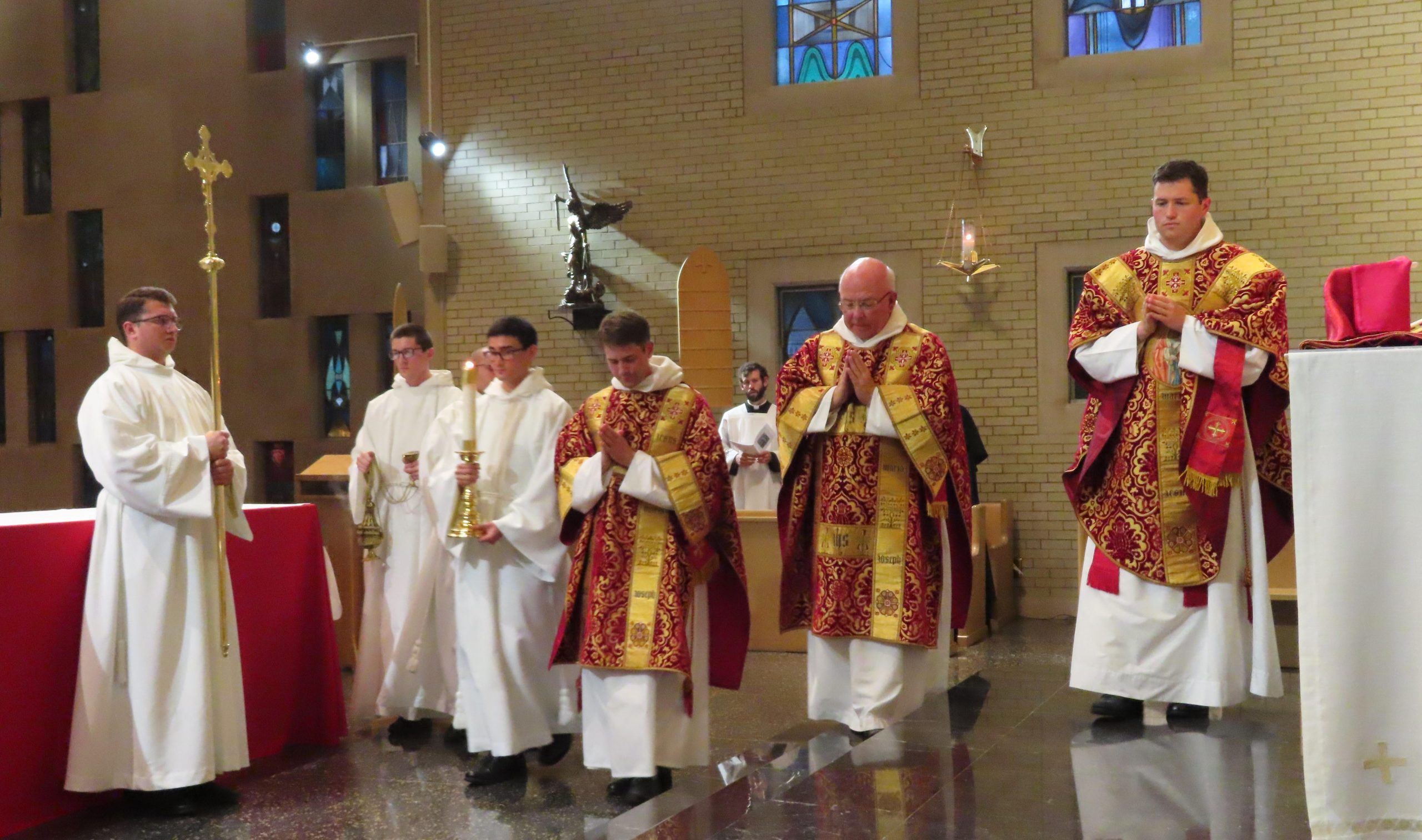
Fr. Jonah Teller, O.P. (right), processes to the altar while celebrating his first Dominican Rite Mass.

The Ancient Rite of the Dominican Order
By Fr. Patrick Mary Briscoe, O.P.
On the feast of Sts. Peter and Paul, one of our newly-ordained priests, Fr. Jonah Teller, O.P., celebrated Solemn High Mass in the Dominican Rite for the first time at St. Gertrude’s Church in Cincinnati. Fr. Jonah grew up coming to St. Gertrude’s, and that was where he met the Dominicans and found his vocation.
What is the Dominican Rite?
For those who are familiar with the Extraordinary Form of the Roman Rite, the Dominican Rite is its “cousin,” so to speak. It was the liturgy used by the Order of Preachers from the mid-13th century until the liturgical changes following the Second Vatican Council. In the tenth century, the Roman way of celebrating the Mass began to be the liturgical norm for Western Europe. But because of the difficulties of communication back then, this “Roman Rite,” though ostensibly used throughout all of Europe, was not uniformly executed. Thus, various regions practiced their own variations of this one rite.
When St. Dominic founded his Order of Preachers in 1216, there was a need to have a standard way of celebrating the Mass and Divine Office within the Order, since the friars were very quickly spread out across Europe. The result was the Dominican Rite as we know it today, codified in the 1250’s by St. Dominic’s successor, Bl. Humbert of Romans.
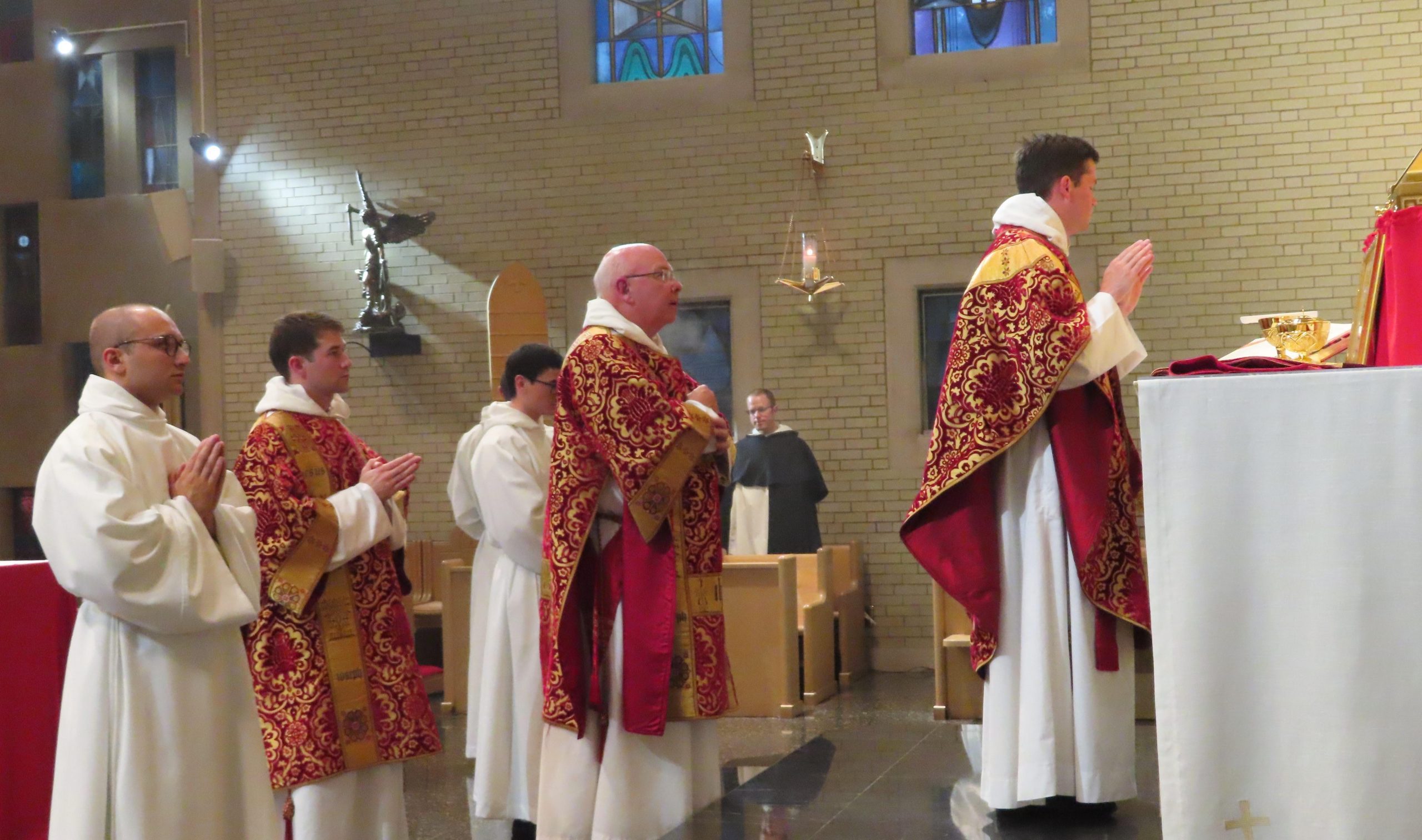
The priest, deacon and subdeacon positioned on the steps of the high altar during the Eucharistic Prayer.
Some Unique Aspects of the Dominican Rite
You may notice some differences in the Dominican and Roman Rites – particularly the activity of the deacon, subdeacon, and acolytes. Their roles are significantly augmented in the Dominican Rite, as compared to the Roman, in order to minimize the amount of tasks to which the priest celebrant needs to attend. The point is to preserve an atmosphere of contemplation for the priest—his job is to keep his mind on God and his heart in communion with God, and so to offer the Divine Sacrifice all the more worthily on behalf of the whole Church. One example of this is the way the deacon and subdeacon prepare the chalice and altar while the priest is sitting down, bringing the various instruments to him to receive his blessing.
You will also notice how the Dominican Rite subtly adopts the charismatic spirit of St. Dominic in his use of bodily postures during prayer. For instance, immediately after the consecration of the chalice, the priest extends his arms in the position of the crucifix, praying on behalf of all the people present, in front of the Body and Blood of Christ that he has just consecrated.
An 800 Year Tradition
All of these features, which pertain to the rich 800-year old history of the Dominican Order, were on display at St. Gertrude’s in Cincinnati. God was worshipped and His people contemplated Him with attentive minds and loving hearts, disposed by these ancient ceremonies. We congratulate Fr. Jonah and his seven classmates ordained priests of Jesus Christ on May 22, 2020!



